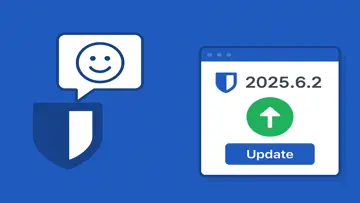Introduction to OpenOPC for Python
OpenOPC for Python is a convenient and efficient library that enables Python developers to interact with OPC (OLE for Process Control) servers. It is created by Barry B. and serves as an important tool for integrating different automation systems and retrieving data in Python applications. This library is primarily aimed at engineers and developers working in industrial automation, allowing them to communicate with various OPC-compliant software systems effortlessly.
Key Features
- Simplicity: OpenOPC streamlines the process of reading and writing to OPC servers, abstracting the complexities inherent in traditional OPC stack implementations.
- Support for Multiple OPC Standards: The library supports both OPC DA (Data Access) and OPC XML-DA standards, allowing for a wide range of compatibility with existing systems.
- Python Integration: Being a Python library, it allows developers to incorporate OPC functionality into their applications without needing to learn additional programming languages.
- Cross-Platform Support: OpenOPC for Python works across different operating systems, making it versatile for various development environments.
- Robust Documentation: Comprehensive documentation is provided, helping users troubleshoot issues and understand the API methods effectively.
Installation Process
The installation of OpenOPC for Python is straightforward. Users can install the library using pip, which simplifies package management in Python. The command is as follows:
pip install OpenOPC
This command will fetch the latest version from the Python Package Index (PyPI) and install it along with its dependencies.
Getting Started
To start using OpenOPC, a connection must be established with an OPC server. Below are some basic steps highlighting the process:
- Import the OpenOPC module.
- Create an instance of the OpenOPC class.
- Connect to the desired OPC server using its name and specify credentials if needed.
import OpenOPC
opc = OpenOPC.open_client('your_opc_server_name')
opc.connect()
This simple code snippet sets up a connection to an OPC server where 'your_opc_server_name' should be replaced by the actual name of your OPC server.
Data Access Methods
OpenOPC provides multiple methods for accessing data from OPC servers. Some key methods include:
- Read: Retrieve single or multiple items from the OPC server using their item IDs.
data = opc.read('ItemID1', 'ItemID2')- Write: Write values to specified items on the server.
opc.write('ItemID1', value)- Subscribe: Set up monitoring for changes in specific items’ values on the server.
opc.subscribe('ItemID1')- IsConnected: Check the connection status of the client to the server.
connected = opc.is_connected()
Error Handling
Error handling is crucial when dealing with network-based applications. OpenOPC provides exception handling options, which can help manage potential communication failures or data retrieval errors. It’s important to wrap calls in try-except blocks to handle these exceptions gracefully:
try:
data = opc.read('ItemID1')
except Exception as e:
print(f"An error occurred: {e}")
Troubleshooting Common Issues
<pWhile working with OpenOPC, users may encounter several issues. Here are common problems along with potential solutions:- Connection Issues: Ensure that the OPC server is running and accessible over the network. Check firewalls or network settings that might be blocking access.
- No Data Returned: Verify that item IDs used in read requests are correct and exist on the OPC server.
- Piping Problems on Windows: Users may need to ensure that DCOM permissions are correctly configured if facing issues related to connectivity on Windows systems.
- User Permissions: Ensure that your user has adequate permissions set in both the operating system and within the OPC server application itself for data access or operations.
User Community and Support
The community around OpenOPC for Python includes a variety of engineers, developers, and users who have experience working with different automation technologies. Forums, mailing lists, and online groups can often provide assistance if users run into difficulties or have questions regarding advanced functionalities.
If You're Ready To Explore
If you’re an engineer or developer looking for a robust solution for interacting with OPC servers using Python, OpenOPC presents itself as a highly useful tool. Its straightforward syntax, comprehensive functionalities, and extensive compatibility make it a top choice among its peers in the field of industrial automation integration.
The ongoing support from Barry B. facilitates further improvements and often introduces new features tailored to meet evolving user needs in real-world applications.
Your Next Steps
Diving into OpenOPC for Python will empower your applications with seamless data integration possibilities within automated environments. Consider starting small by testing connections and basic read/write operations before moving onto more complex integrations involving subscribing to real-time data changes on your chosen OPC servers.
Übersicht
OpenOPC for Python ist eine Open Source-Software aus der Kategorie Programmieren, die von barryb entwickelt wird.
Die neueste Version von OpenOPC for Python ist derzeit unbekannt. Die erste Version wurde unserer Datenbank am 16.10.2009 hinzugefügt.
OpenOPC for Python läuft auf folgenden Betriebssystemen: Windows.
Die Nutzer haben noch keine Bewertung für OpenOPC for Python gegeben.
Neueste Reviews
|
|
EaseUS Key Finder
Müheloses Abrufen verlorener Software-Schlüssel mit EaseUS Key Finder. |
|
|
Iriun Webcam
Verwandeln Sie Ihr Telefon in eine Webcam mit Iriun Webcam! |
|
|
ALF-BanCo
Effiziente Buchhaltung mit ALF-BanCo |
|
|
MT VideoDownloader
Effizienter Video-Downloader mit benutzerfreundlicher Oberfläche! |
|
|
Luminar Neo
Revolutioniere deine Fotobearbeitung mit den fortschrittlichen KI-Funktionen von Luminar Neo! |
|
|
PC-Putzer
Steigern Sie die Leistung Ihres PCs mit PC-Putzer! |
|
|
UpdateStar Premium Edition
Mit der UpdateStar Premium Edition war es noch nie so einfach, Ihre Software auf dem neuesten Stand zu halten! |
|
|
Microsoft Edge
Ein neuer Standard beim Surfen im Internet |
|
|
Google Chrome
Schneller und vielseitiger Webbrowser |
|
|
Microsoft Visual C++ 2015 Redistributable Package
Steigern Sie Ihre Systemleistung mit Microsoft Visual C++ 2015 Redistributable Package! |
|
|
Microsoft Visual C++ 2010 Redistributable
Wesentliche Komponente zum Ausführen von Visual C++-Anwendungen |
|
|
Microsoft OneDrive
Optimieren Sie Ihre Dateiverwaltung mit Microsoft OneDrive |





